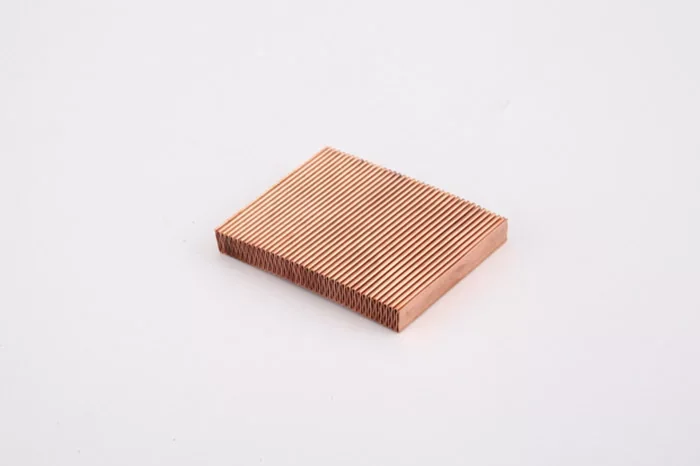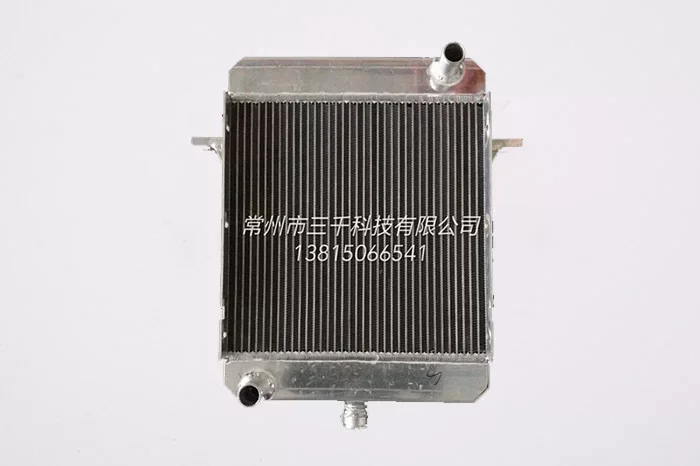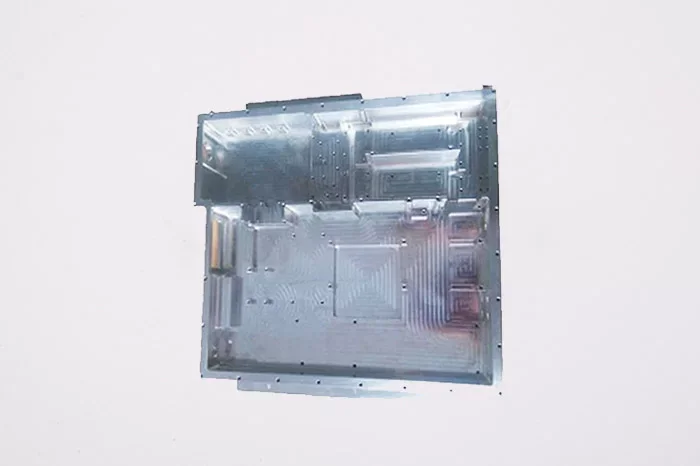Sanqian's blog
There are different types of surface coolers, such as copper aluminum fin surface coolers, so let's take a good look at copper aluminum fin surface coolers so that you can be familiar with and understand different types of surface coolers. thereby broadening their knowledge. In addition, through learning, everyone can also acquire some professional knowledge, so as not to waste such a good learning opportunity.

Online purchase of copper aluminum fin cooler is to purchase copper aluminum fin cooler on relevant industry websites. From a professional point of view, there are some aspects that need to be considered, and these aspects that need to be considered are all important considerations, all of which need to be considered, and none of them can be omitted because they are all related to the purchase of the product. Among these important considerations, there are two specific aspects: product size and product price. Therefore, these two specific aspects should be considered, not only one of them.
2. Is the product quotation of copper aluminum fin surface coolers of different sizes important work? Why should we have a clear understanding of the selection requirements of this product?铜铝翅片冷却器,从目前来看,它有不同的规格和尺寸,无论选择哪种尺寸,都会涉及到产品报价的工作,而这个工作非常重要,因为它关系到选型。买家能否正确选择商品。因此,基于此可以得出问题1的答案是肯定的,即对于不同尺寸的铜铝翅片表冷器,产品报价是一项重要工作。
有必要对铜铝翅片表冷器的选型要求有一个清晰的认识,因为这是产品的一个重要方面,关系到采购商能否正确选择产品。因此,有必要对其使用要求有一个清晰的认识。了解,不能不了解,否则会影响产品的正确选择和正常使用。
3、亲水性铝箔翅片比铜铝翅片表面冷吗?亲水铝箔翅片表冷器不是铜铝翅片表冷器,因为这是两种不同的表冷器,它们有一些区别和一些区别,但不要混淆,否则,会影响正确选用这两个表面冷却器。
Do you know vacuum furnaces? Vacuum furnaces play an irreplaceable role in mold production and are mainly used for ceramic firing, vacuum smelting, degassing of electric vacuum parts, annealing, brazing of metal parts, and ceramic-metal sealing. The vacuum heat treatment of the vacuum furnaces can realize almost all heat treatment processes, such as quenching, annealing, tempering, carburizing, and nitriding. In the quenching process, gas quenching, oil quenching, nitrate quenching, water quenching, etc. Brazing, sintering, surface treatment, etc. The vacuum furnace has high thermal efficiency, can achieve rapid heating and cooling, can achieve no oxidation, no decarburization, no carburization, can remove phosphorus chips on the surface of the workpiece, and has the functions of degreasing and degassing, so as to achieve the effect of a bright and clean surface.
Generally speaking, the workpiece to be processed is heated slowly in the furnace, the internal heat temperature difference is small, the thermal stress is small, and the deformation is small. The product qualification rate is high. It can reduce the cost and has the effect of degassing, thereby improving the mechanical performance and service life of the work. The working environment is good, the operation is safe, and there is no pollution and public nuisance. The workpiece to be treated has no danger of hydrogen embrittlement, the surface hydrogen embrittlement of titanium and refractory metal shells is prevented, and the stability and repeatability of the vacuum heat treatment process are good. With this series of advantages, the development of vacuum heat treatment equipment and processes has been paid more and more attention and applied more and more widely.
Vacuum heat treatment is a comprehensive technology combining two specialties of vacuum technology and heat treatment, which means that all and part of the heat treatment process is carried out in a vacuum state. my country divides vacuums into low, medium, high, and ultra-high vacuums.
Vacuum furnaces and intermediate frequency electric furnaces have good development prospects in the field of thermal processing, which are used for induction heating of diathermy, rolling, forging, pipe bending, heat treatment (quenching), welding, and other processes. So what are the heat treatment skills of vacuum furnaces and intermediate frequency electric furnaces?
1. When treating titanium alloys in a vacuum furnace, nitrogen should not be used as a cooling gas, because titanium and nitrogen react at high temperatures to form golden titanium nitride.
2. The movable connection parts of the vacuum furnaces are all sealed and connected by O-shaped rubber rings, and this part is cooled by water.
3. When the workpiece is quenched in a vacuum state, vacuum quenching oil should be used, which has a low saturated vapor pressure.
4. The maintenance of the vacuum furnaces should be in the state of vacuum or pure nitrogen, to avoid inhalation and moisture absorption when not in use.
5. The pressure rise rate of the domestic vacuum furnaces should be no more than 1.33Pa/h, and the standard of some foreign enterprises is 0.67Pa/h.
6. The vacuum heating is mainly based on radiation, and the workpiece should be kept apart in the furnace.
7. During the heating process, the workpiece and the materials in the furnace will be out of gas, which will reduce the vacuum degree.
8. The heating temperature of vacuum tempering, vacuum annealing, vacuum solution treatment, and vacuum aging is generally the same as that of conventional treatment.
9. The vacuum tempering furnace should have a quick cooling device. The pressure of cooling water should be greater than 0.2Mpa, and the flow should be adjustable.
10. Cooling gas: steel generally uses 99.995% nitrogen, high-temperature alloys use 99.999% nitrogen or argon, and titanium alloys use 99.995% argon.
11. Heating up: After placing the workpiece, it is generally pre-pumped to 6.67Pa before heating up.

Changzhou Sanqian Technology Co., Ltd. sells Vacuum brazing of liquid-cooled plates, if you need it, welcome to consult us!
The processing method of hardware accessories first needs to depend on the technical requirements of the surface of the parts to be processed. It should be noted that these technical requirements are not necessarily the requirements specified on the part drawings, and sometimes it may be due to technological reasons. This aspect is higher than the requirements on the process drawings. What factors do hardware accessories need to pay attention to when manufacturing, let hardware accessories exporters take you to understand.

For example, because the benchmarks do not overlap, the surface processing requirements of hardware accessories are increased, or they are used as precision benchmarks to put forward higher processing requirements. The required final processing method, and determine the processing method that requires several processes. The selected part processing method should meet the requirements of the quality of the parts, good processing economy, and improved efficiency. Therefore, when choosing the hardware accessories processing method, it needs to be considered The following factors:
1. The machining accuracy and surface roughness that can be obtained by any hardware accessories processing method have a relatively large range, but knowledge is economical in some narrower ranges, and the machining accuracy in this range is relatively economical Therefore when selecting the processing method, the corresponding processing method that can obtain economical processing accuracy should be selected;
2. The material composition of hardware accessories needs to be considered;
3. The structure, shape, and size of hardware accessories need to be considered;
4. It is necessary to consider the requirements of production efficiency and economy. In mass production, high-efficiency advanced technology should be adopted, and even the manufacturing method of the blank can be fundamentally changed, which can reduce the amount of movement of precision machining;
5. It is necessary to consider the existing processing equipment and technical conditions of the hardware Accessories exporter. When choosing the processing method, the existing manufacturing equipment should be fully utilized, the potential of the enterprise should be tapped, and the enthusiasm and creativity of the workers should be brought into play, but continuous improvement should also be considered. The existing processing methods and equipment use cutting-edge technology to improve the technological level.
The above is the processing method of hardware accessories introduced by hardware accessories exporter, Sanqian Technology sells a variety of hardware accessories, such as folded copper fin, and corrugated fin, welcome to contact us!
Do you know the welding process of brazed cold plate? Come and listen to the editor of the brazed cold plate manufacturer Changzhou Sanqian Technology Co., Ltd. tell you about it.
Friction stir welding of Brazed cold plateAdvantage1. Not sensitive to oxides before welding;
2. The welding seam strength is good, such as: aluminum alloy 5A06, the performance of the welding seam and the base metal is consistent; aluminum alloy 6061/6063, the welding seam can reach more than 80% of the base metal performance;
3. No auxiliary materials are added during welding, which belongs to solid phase connection, with good weld strength and excellent reliability;
4. Repair welding can be carried out for defects after welding;
Disadvantage1. The welding seam is contour welding, which will cause the cold plate to channel water and affect the heat dissipation performance;
2. Excessive welding seam span will affect the pressure resistance index of the cold plate;
Brazed cold plate gas shielded weldingAdvantage1. Compared with vacuum brazing, the price is cheap;
2. The welding seam is in surface contact, the cold plate after welding is similar to the design index, and the pressure resistance performance is good;
3. Suitable for mass production.
Disadvantage1. Oil and water must be removed before welding (strict requirements)
2. Poor welding can cause batch scrap;
3. Auxiliary materials need to be added during welding, and heat treatment is required after welding;
4. The joint of the weld should not vibrate, which can cause the weld to extend; it is not easy to repair the welding defect;
5. 3A21 and 6063 are commonly used as welding materials, and the welding cost of the same material increases.
Brazed cold plate vacuum brazingAdvantage1. The weld quality is good; the quality is stable and reliable;
2. Compared with gas shielded welding, the welding quality of the same material is simple and the quality is good.
DisadvantageThe quality of the horizontal welding seam is stable, and the reliability of the longitudinal seam is poor. Gas shielded welding and vacuum brazing are actually equivalent to the middle and high configuration of a car. The pursuit of good welding quality requires more investment.

以上是钎焊冷板生产厂家常州三千科技有限公司总结的钎焊冷板的三种焊接工艺。如果您有任何其他问题,请与我们联系。
Common radiator fins include aluminum, alloy, copper, brass, nickel, titanium, stainless steel, carbon steel, etc., among which aluminum and alloy are the most common.
The basic performance of finned tube heat exchange should have good weldability and formability, high mechanical strength, good corrosion resistance and thermal conductivity. Nonetheless, aluminum and alloys are characterized by increased tensile and higher tensile strength at lower temperatures. They are widely used all over the world, especially in low temperature compact heat exchange.
Features of aluminum fins1. Low density
Through alloying and heat treatment, it can achieve the structure of architectural steel. Suitable for all kinds of transportation, especially for small vehicles, reducing weight and consumption.
2. Good corrosion resistance
Aluminium oxides are non-toxic under harsh conditions. With aluminum heat exchange, there is no need to worry about the internal air or liquid being damaged by oxides for a long time.
3. Good thermal conductivity
Particularly suitable for heat sinks, heat transfer evaporators and condensers.
4. High yield and die-cutting resistance.
Easy to process and shape.
When the root of the fin is grounded on the base bare tube, the heat will be transferred from the root of the fin along the height of the fin in the case of heat transfer from the inside to the outside. It is also continuously transferred to the surrounding fluid by convective heat transfer. As a result, the fin temperature gradually decreases along the height. This also shows that the difference between the fin temperature and the ambient fluid temperature is gradually decreasing, and the change in heat per unit is shrinking. Consequently, the effect of fin surface area on enhancing heat transfer is diminishing. The taller the fins, the less the added area contributes to heat exchange.
